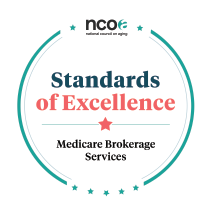Key Takeaways
Medicare is not free. Take the time to understand the plan options that are available to you and when you are required to make a decision.
Not enrolling on time could lead to a penalty.
If you need help paying for the costs of Medicare, ask about Extra Help, the Medicare Savings programs, Medicaid, and state pharmaceutical assistance programs.
If you are turning 65 and newly eligible for Medicare, it’s important to know about your Initial Enrollment Period. This is the period three months before, the month of, and the three months after your sixty-fifth birthday, and when you're eligible to enroll in Medicare.
The least expensive plan is not always the best option. Neither is the most expensive plan always the best option. Get advice about what makes sense for your personal situation.
Considering Medicare plan coverage and price options is a great place to start, along with these five simple steps.
1. Know what to do — and when
Medicare has specific windows of time to make decisions known as 'Enrollment Periods'. Even if you are 65 and still working, you can still review your options. Individuals receiving Social Security benefits when turning 65 will be automatically enrolled in Medicare Parts A and B. Based on your employment situation and health care options, you may need to consider enrolling in Medicare.
To help you understand what you might pay, our Age Well Planner Medicare Cost Estimator provides a free, personalized Medicare cost estimate.
2. Check for help with paying for Medicare expenses
Medicare is not free. There are programs that can help pay for prescriptions and health insurance. Examples include Medicare Savings Programs (MSPs), Extra Help for prescription drug coverage, Medicaid, and state pharmaceutical assistance programs.
Our BenefitsCheckUp can help you find what’s available– by screening for public and private benefits programs. You can also contact the local State Health Insurance Assistance Program (SHIP) for help.
3. Decide between Original Medicare and Medicare Advantage
Start by making a list of both your health and prescription drug needs throughout the year. Original Medicare has two parts: Part A covers hospitalization and Part B covers medical expenses. Many people find that Parts A and B together still have gaps in what is covered, so they purchase a Medicare Supplement (or Medigap) plan. These plans can cover things like the Part A deductible, coinsurance for skilled nursing facility care, and some may cover foreign travel emergencies. People with Original Medicare can see any doctor that accepts Medicare.
Instead of Original Medicare, a Medicare Advantage (MA)/Part C plan is an option. Often MA plans include prescription drug coverage and cover more services than basic Medicare, such as vision care and wellness programs. These plans are sold by agents working for insurance companies approved by Medicare. There is typically a premium for an MA policy on top of the Part B premium, although some MA plans offer zero premium plans.
To evaluate the best choice for medication coverage, look at your prescription drug needs, out of pocket costs, and which doctors are covered.
4. Compare policy coverage and price
If choosing Original Medicare (Parts A and B), the premiums and coverage will be the same as others across the nation. You can see any provider that accepts Medicare.
If choosing a Medicare Advantage, Medicare Part D, or Medigap policy, there will be hundreds of options to consider. It pays to shop around; the least expensive policy may not be the best value for your situation.
For personal assistance in selecting a plan, consider contacting a State Health Insurance Assistance Program (SHIP) for guidance, or get free help from a licensed benefits advisor.
5. Select and enroll on time
Selecting and enrolling in a Medicare plan is not a one-time decision. Insurance plans — and personal needs — change each year. Medicare has an Open Enrollment Period annually for Medicare drug and Medicare Advantage plans. However, there are limitations on when you can purchase or change a Medigap policy. Take the time to evaluate changing needs and coverage options to ensure the best coverage at the best rates.






